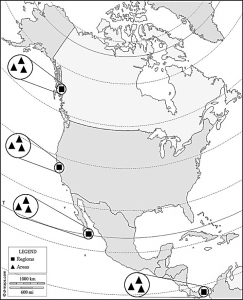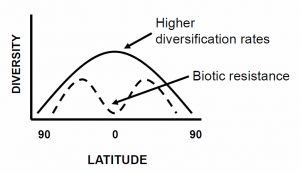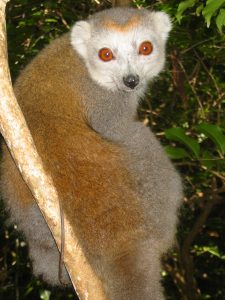Experimental Macroecology: Marine Community Dynamics across Latitude

Our research highlights the fundamental importance of both local processes (e.g., species interactions) and regional processes (e.g., speciation and historical processes that shape species pools) in structuring observed patterns of species richness and composition within and among communities (e.g., Freestone & Harrison 2006, Freestone & Inouye 2006). Ecologists have long speculated that ecological dynamics differ between tropical and higher-latitude environments due to different physical conditions and evolutionary histories. While experimentally teasing apart effects of community processes has traditionally been the purview of ecologists working at relatively small spatial scales, testing hypotheses across broader scales, particularly latitude, requires innovative approaches that integrate community ecology with the expanding field of macroecology. There is a growing recognition that such broad-scale comparisons, while rare, provide unparalleled opportunities to transform our understanding of global ecological dynamics. Using experimental approaches, our research suggests that community dynamics fundamentally differ across latitude and differentially influences how species diversity is distributed in space and time (Freestone & Osman 2011, Freestone et al. 2011, Freestone & Inouye 2015).
Global Marine Invasion Ecology
Biological invasions represent a primary and increasingly significant threat to biodiversity and are a central topic of our research (our review papers include: Hastings et al. 2005, Melbourne et al. 2007, Ruiz et al. 2009, Papacostas et al. 2017). We apply the advances gained through our research on marine community dynamics across latitude (described above) to understand and predict large-scale marine invasion dynamics (Freestone et al. 2009, Freestone et al. 2013). Empirical evidence suggests that there are more non-native species occurring at mid latitudes in comparison to high latitude or tropical systems (Fig. 1). Many factors can affect non-native species establishment, including species interactions, environmental conditions, and propagule supply. Harsh abiotic conditions could render systems environmentally resistant to invasion, possibly contributing to fewer established non-native species at high latitudes. In contrast, if species interactions are stronger in the tropics than in the temperate zone (Freestone et al. 2011, Freestone & Osman 2011), then the tropics may be more biologically resistant to invasion, possibly contributing to fewer established non-native species in the tropics. With increased globalization and new trade routes, the threat of species invasions is increasing exponentially. Further research is urgently needed to understand these dynamics and how they operate from local to global spatial scales.

]Simplified model for native (solid line) and nonnative (dashed line) species richness patterns and processes across latitude. Strong species interactions in the tropics may both increase native richness through increased diversification rates over evolutionary time and decrease nonnative richness though biotic resistance over ecological time (from Freestone et al. 2013).
Interaction Strengths in Ecological Networks
 Understanding the complexity and strength of species interactions can also illuminate mechanisms of species coexistence and ecosystem stability in diverse tropical environments. To build on prior work on terrestrial community ecology (Freestone & Harrison 2006, Freestone & Inouye 2006, Freestone 2006), and to develop quantitative techniques that can be applied to other systems, we have ongoing collaborative research that is advancing quantitative approaches to the study of species interactions in tropical forests. In collaboration with Dr. Brent Sewall (Temple University), we are working to improve estimates of interaction strength in ecological networks. Specifically, we are exploring the structure and dynamics of mutualisms in tropical forests, focusing on a foraging guild of vertebrate frugivores (fruit bats, birds, and lemurs) and a fruiting guild of Ficus trees in Madagascar (Sewall, Freestone, et al., 2013).
Understanding the complexity and strength of species interactions can also illuminate mechanisms of species coexistence and ecosystem stability in diverse tropical environments. To build on prior work on terrestrial community ecology (Freestone & Harrison 2006, Freestone & Inouye 2006, Freestone 2006), and to develop quantitative techniques that can be applied to other systems, we have ongoing collaborative research that is advancing quantitative approaches to the study of species interactions in tropical forests. In collaboration with Dr. Brent Sewall (Temple University), we are working to improve estimates of interaction strength in ecological networks. Specifically, we are exploring the structure and dynamics of mutualisms in tropical forests, focusing on a foraging guild of vertebrate frugivores (fruit bats, birds, and lemurs) and a fruiting guild of Ficus trees in Madagascar (Sewall, Freestone, et al., 2013).